Key takeaways:
- Visualization creates mental blueprints that enhance confidence, decision-making, and performance in training and real scenarios.
- Techniques such as scenario-based imagery and linking sensory details to training enhance focus and emotional preparation for challenges.
- Incorporating journaling into visualization routines helps track progress and refine techniques, reinforcing learning and accountability.
- Regular repetition of visualized scenarios strengthens mental resilience, akin to physical training, leading to improved performance under pressure.
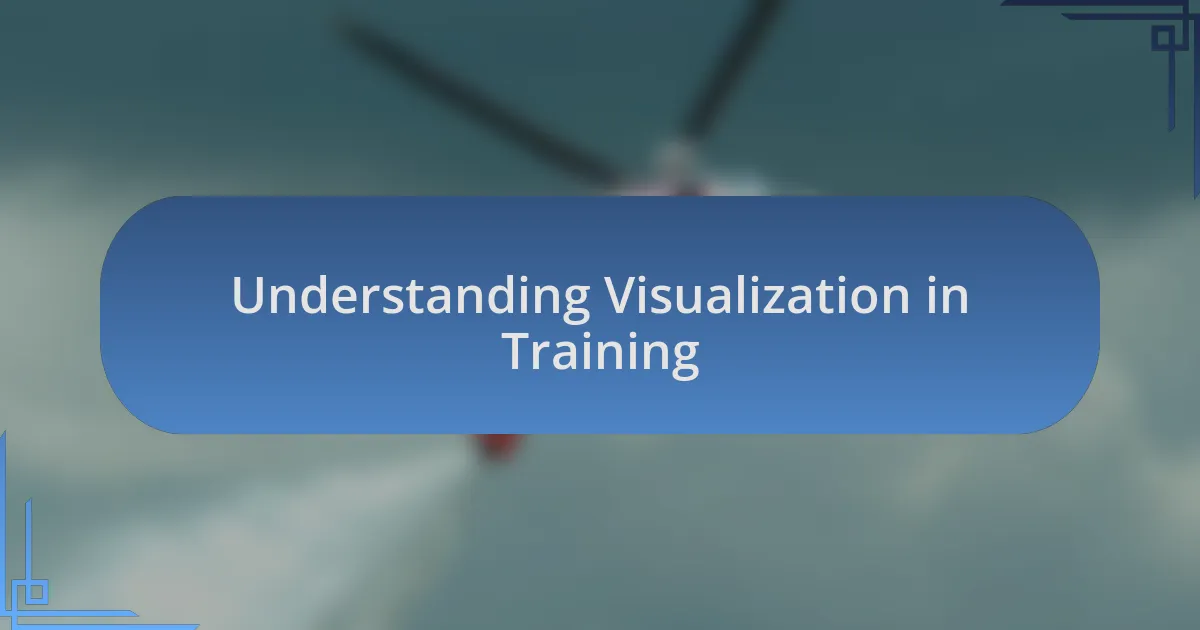
Understanding Visualization in Training
Visualization in training is more than just imagining scenarios; it’s about creating mental blueprints of what we want to achieve. I remember during one training exercise, I vividly pictured myself navigating through smoke-filled environments, which helped calm my nerves before we entered. How often do we underestimate the power of our mind to prepare us for real-world challenges?
When I visualize, I can almost feel the gear on my back and hear the sirens in the distance. It’s an emotional journey that connects me to the purpose behind my training. This technique not only boosts my confidence but also helps refine my decision-making skills. Have you ever thought about how seeing yourself succeed can transform your actual performance?
Additionally, visualization allows us to rehearse complex scenarios without the physical toll of an intense training session. For instance, picturing myself effectively leading a team during a chaotic incident has sharpened my leadership abilities. Isn’t it fascinating how our brains can create real changes through mere imagination? Embracing this practice enhances not just our skills but also our resilience in the face of adversity.
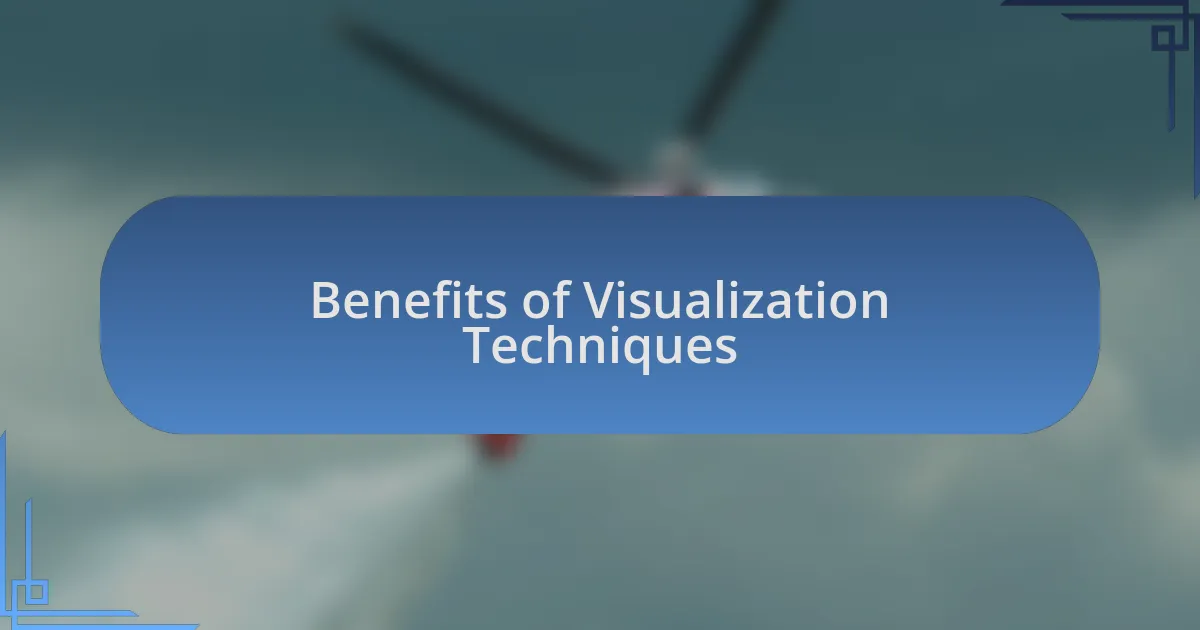
Benefits of Visualization Techniques
Visualization techniques bring a host of benefits that can profoundly impact our training. One of the most significant advantages I’ve noticed is the reduction of anxiety. The moment before a drill can be nerve-wracking, but when I mentally rehearse each step, I find calm washes over me. Why is it that picturing a successful outcome can shift our mindset so dramatically?
Furthermore, visualization helps solidify muscle memory. When I vividly imagine executing specific movements, like swiftly navigating obstacles, my body seems to remember those actions better during actual practice. It’s like tricking my mind into believing I’ve already succeeded. Have you ever experienced that moment of déjà vu when executing a skill that you’ve rehearsed mentally?
Lastly, using visualization fosters a strong sense of team cohesion. Imagining us working seamlessly together in high-pressure situations not only builds trust but also enhances communication. I find that when I visualize my team’s collective success, it boosts our morale and strengthens our bonds. Isn’t it incredible how a few moments of focused imagination can transform our interpersonal dynamics?
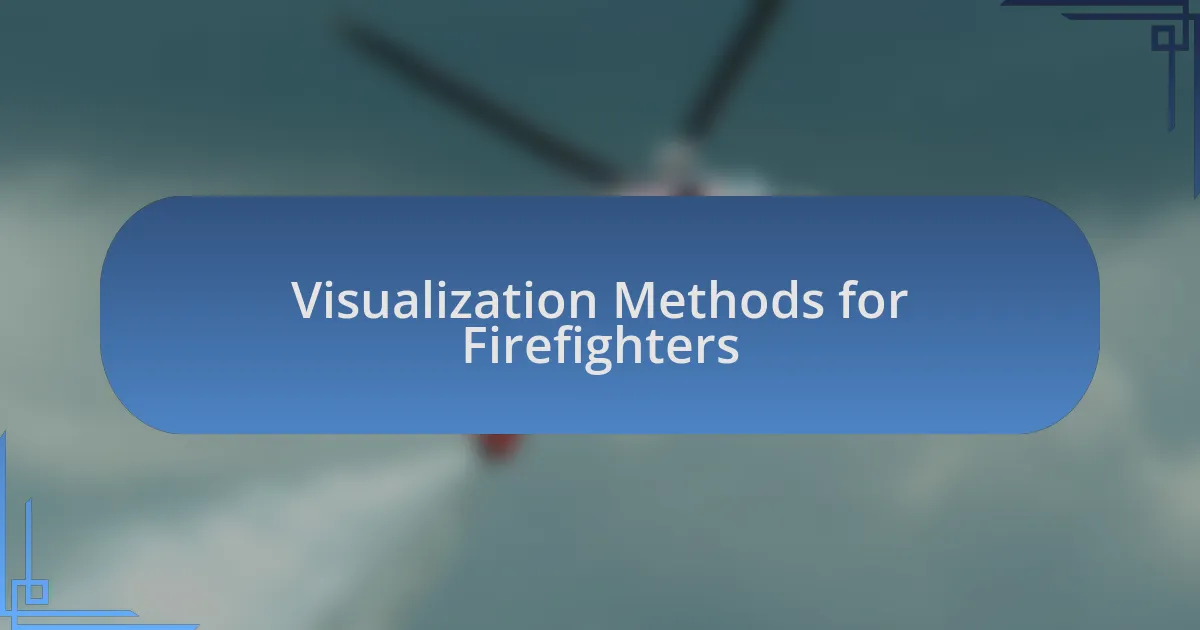
Visualization Methods for Firefighters
Visualization methods for firefighters take many forms, but one that has especially resonated with me is the use of scenario-based mental imagery. During a quiet moment, I envision facing multiple challenges, from battling a raging fire in an apartment building to rescuing individuals in smoke-filled rooms. This practice not only heightens my awareness of what to expect but also intensifies my focus, helping me prepare for situations that can be incredibly chaotic. Have you ever thought about how imagining a scenario can prepare you for the unexpected?
Another effective method I’ve found is utilizing visual cues from training materials or past experiences. I often replay my training videos in my mind, recalling specific techniques, like using a fire hose correctly or coordinating with a partner during a rescue. It’s surprising how reliving those experiences, even just mentally, can improve my overall proficiency. This approach creates a reference point for my brain, reinforcing the skills I need to execute under pressure.
Lastly, I sometimes draw on guided visualization with a specific focus on breathing techniques. I close my eyes and visualize inhaling confidence while exhaling tension. This method has been instrumental in calming pre-training jitters. I’ve noticed that during high-stress situations, focusing on my breath helps me remain steady and effective. Isn’t it fascinating how something as simple as breath control can anchor us in the moment?
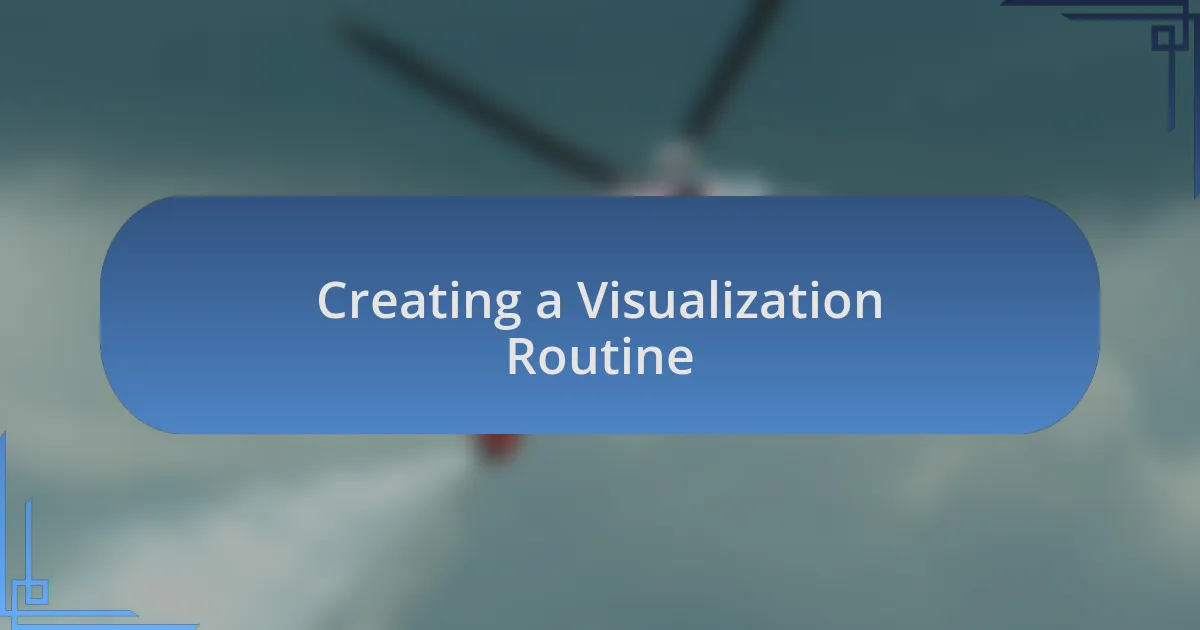
Creating a Visualization Routine
Creating a visualization routine is a deeply personal yet highly effective journey. For me, establishing a consistent schedule is key. I dedicate a few minutes each morning when I am fresh and free from distractions. During this time, I close my eyes and imagine myself facing various scenarios, visualizing each step as vividly as possible. This practice has become a grounding ritual that prepares my mind for the physical challenges I will encounter throughout the day.
I’ve found that my visualization sessions are much more potent when I link them to specific training days. For example, if I know I will be practicing search and rescue techniques, I visualize the environment I’ll be working in and the emotions I might feel at that moment. I picture the sounds of crackling wood and the tightness in my chest as I push through smoke. By incorporating these sensory details, I not only cement the skills in my mind but also create an emotional connection that helps me tap into my adrenaline and courage when it truly matters.
To enhance the effectiveness of my routine, I’ve started to use a simple journal as part of my process. After each visualization session, I jot down what stood out or any new feelings that surfaced. Reflecting on these notes not only reinforces the mental imagery but also allows me to track my progress over time. Have you ever tried combining journaling with visualization? I’ve found that this dual approach enriches my understanding and keeps me accountable in my training—a small investment that pays tremendous dividends in my performance.
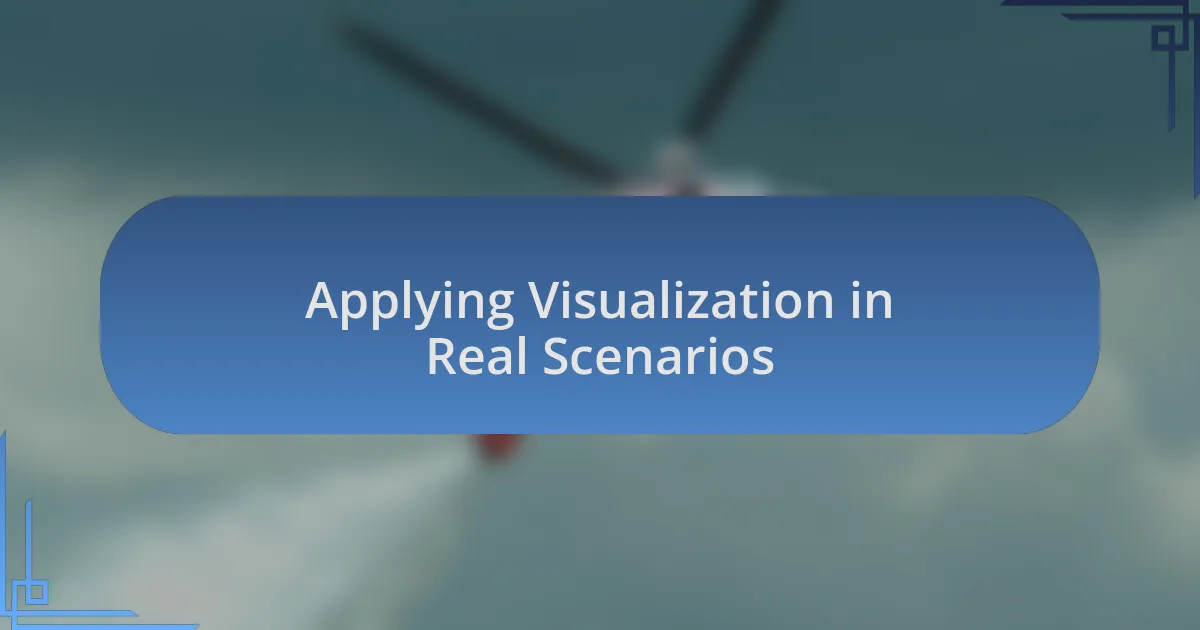
Applying Visualization in Real Scenarios
When I face real scenarios in training, visualization transforms into a powerful ally. I recall a particular drill where we had to handle a simulated structure fire. Prior to the event, I spent time visualizing every phase—from donning my gear to making entry—and surprisingly, when the moment arrived, it felt like I had already been there before. Have you ever noticed how mentally rehearsing a challenging situation can alleviate anxiety? It certainly does for me, shifting my focus from worry to action.
During last month’s training, I found myself in a high-pressure situation where communication was key. In my visualization, I had imagined the chaos, the loud voices, and the urgency in the air. When it was my turn to lead the team, I already knew how I wanted to convey the plan, using calm but assertive signals. This experience showed me how visualization can translate into confidence in real-life scenarios. Can you imagine having that clarity in a moment filled with noise and distractions?
On another occasion, while prepping for a physical fitness test, I visualized pushing through exhaustion—every heavy breath and aching muscle. The way I pictured crossing the finish line not only motivated me but also strengthened my mental resilience. When I actually faced that grueling challenge, those mental images spurred me on. Have you ever experienced a surge of strength in the face of fatigue simply because you had already prepared your mind? For me, it’s a game changer and a reminder of how impactful visualization can be in not just training but real firefighting situations.
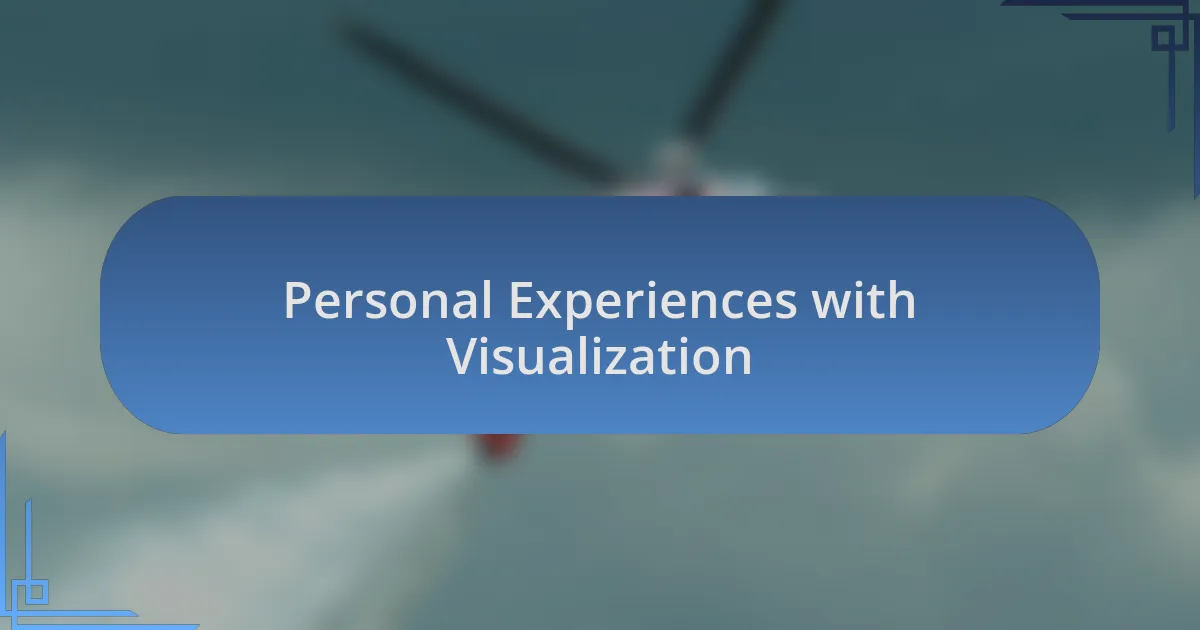
Personal Experiences with Visualization
I remember a day during training where we faced a simulated search and rescue operation in a smoke-filled environment. Leading up to it, I closed my eyes and visualized my path through the haze, focusing on each step and breath. The moment I entered that dark room, I felt an unexpected calm, as if I had already navigated the space countless times. How incredible is it that our minds can prepare us for such intense experiences?
Another instance that stands out is when we practiced emergency medical responses. I vividly imagined the frantic pace of the scenario, the urgency of helping an injured teammate. By clearly visualizing how I would assess the situation, my heart rate stayed steady even when time seemed to fly. It made me realize that visualization isn’t just about seeing the success; it’s about preparing emotionally for the pressure. Have you ever confronted a stressful situation so often in your mind that the real experience feels almost familiar?
Lastly, during a night drill, I faced the challenge of operating equipment in complete darkness. Prior to the drill, I took a few quiet moments to visualize the tools and their functions under low visibility. As I maneuvered through the darkness, that mental rehearsal kicked in, allowing me to work as if I had done so many times before. It’s truly amazing how visualization helped transform fear into familiarity. Isn’t it remarkable how our minds can create a sense of certainty in the midst of uncertainty?
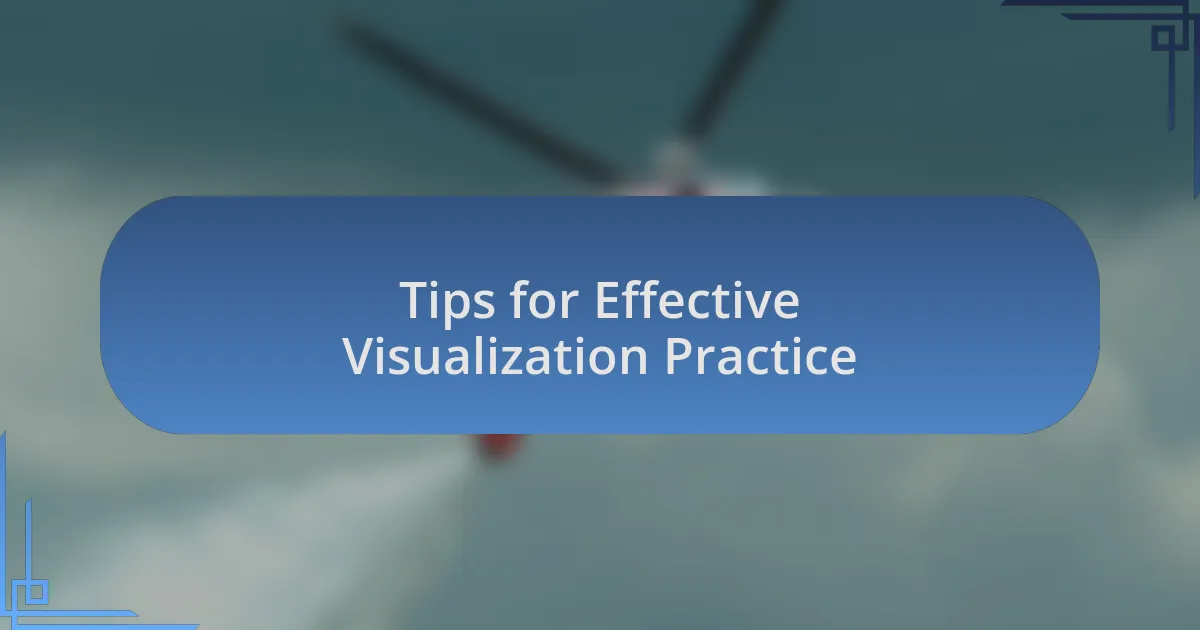
Tips for Effective Visualization Practice
When practicing visualization, it’s crucial to create a detailed mental image of the scenario. I often find that the more vivid my visualization, including sounds and sensations, the more effective it becomes. For example, while envisioning a fire scene, I imagine the crackling of flames and the weight of my gear; this level of detail immerses me fully and prepares me for the variable challenges I might face.
Another tip I recommend is to incorporate regular check-ins with yourself after visualization sessions. I do this by journaling my feelings and thoughts, which allows me to assess how well I prepared for various scenarios. Often, I find that writing down what went well and what I felt during the visualization process helps me refine my focus for the next session. Have you tried reflecting on your experiences? It might surprise you how clarity emerges from such exercise.
Finally, embrace the power of repetition in your visualization practice. I typically review the same scenarios multiple times, reinforcing my mental pathways. This practice builds confidence and helps to eliminate doubt. Just like training my body through repeated drills, honing my mind in the same way solidifies my skills. Doesn’t it seem fitting that strengthening one’s mental resilience parallels physical strength?